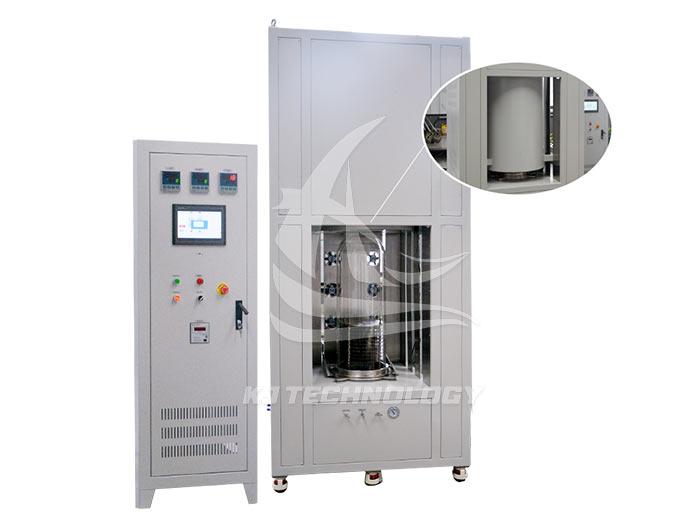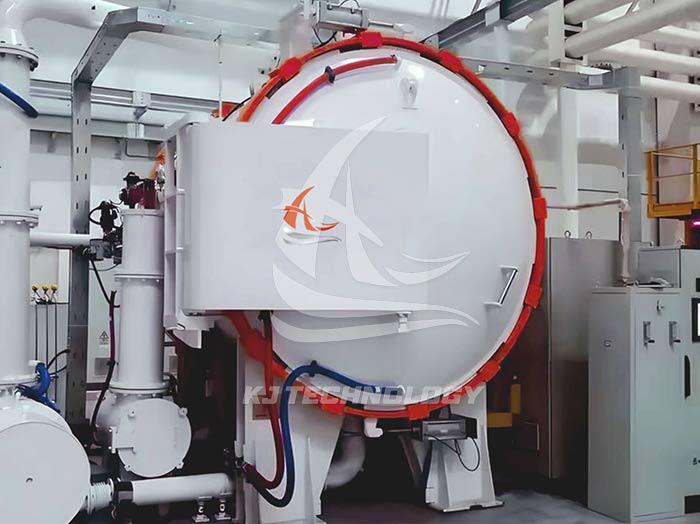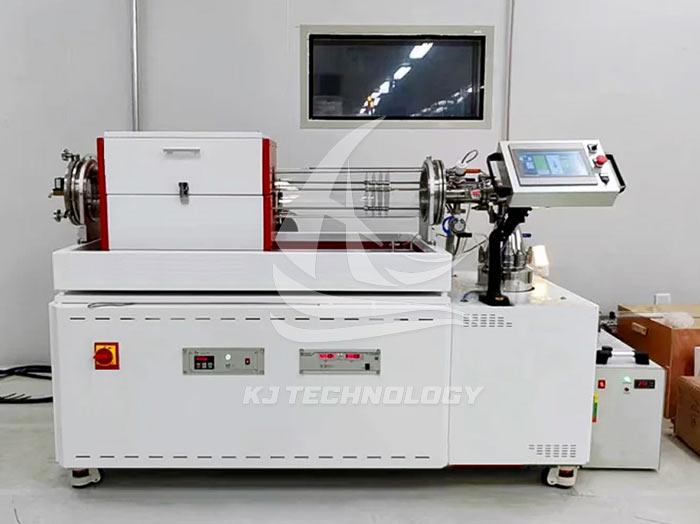What are the application scenarios of vacuum atmosphere heat treatment furnace?
 05-27-2025 Author: KJ technology
05-27-2025 Author: KJ technology
The vacuum atmosphere heat treatment furnace plays an irreplaceable role in the high-end manufacturing field through the synergistic effect of vacuum environment and atmosphere control. Its core advantages lie in eliminating oxidation pollution, accurately controlling material structure, and adapting to complex process requirements. The following is a systematic exposition from three aspects: application fields, typical processes, and case analysis:
1. Core application areas
a. Aerospace and Defense
High temperature alloy component treatment: Aircraft engine turbine blades (such as IN718 nickel based alloy) need to undergo solution treatment under vacuum at 1100 ℃ to eliminate casting stress and optimize grain structure, thereby increasing fatigue life by more than three times.
Titanium alloy heat treatment: TC4 titanium alloy is annealed in a vacuum environment to avoid the formation of surface oxide layer. At the same time, by controlling the heating rate (≤ 5 ℃/min), the grain size is refined and the fracture toughness is improved.
b. Medical Devices and Biomaterials
Implantation grade titanium alloy purification: Annealing Ti-6Al-4V alloy at 850 ℃ under a vacuum of 10 ⁻ Pa can remove surface carbide impurities and increase the biocompatibility test pass rate to 99%.
Bright quenching of cobalt chromium alloy: After quenching at 1050 ℃ under nitrogen protection, the surface roughness is reduced to below Ra0.4 μ m, meeting the friction coefficient requirements of joint prostheses.
c. Semiconductors and Electronic Materials
Silicon wafer annealing: Annealing is carried out under hydrogen atmosphere (volume fraction 5%) and vacuum conditions at 1200 ℃, which can repair ion implantation damage and increase carrier mobility by 20%.
Sintering of ceramic capacitors: BaTiO3 ceramics are sintered at 1450 ℃ in a nitrogen atmosphere to achieve a dielectric constant stability of ± 1.5% (25-125 ℃).
d. Automotive and Mold Manufacturing
Nitriding of high-speed steel cutting tools: After treatment at 520 ℃ for 4 hours in a mixed atmosphere of ammonia and nitrogen gas (volume ratio 1:9), the surface hardness can reach HV1200 and the wear resistance is improved by 5 times.
Aluminum alloy aging treatment: Keep at 170 ℃ for 8 hours in a vacuum environment to increase the tensile strength of 7075 aluminum alloy to 580MPa.
e. New Energy and Functional Materials
Carbonization of negative electrode material for lithium-ion batteries: Treating graphite at 1000 ℃ under nitrogen protection increases the initial charge discharge efficiency from 85% to 92%.
Sintering of rare earth permanent magnet materials: NdFeB alloy is sintered at 1050 ℃ in an argon atmosphere to achieve a coercivity of over 12kOe.
2. Typical process scenario
a. Vacuum bright annealing
Process parameters: Vacuum degree ≤ 10 ⁻ ³ Pa, temperature 850~1150 ℃, insulation time 1-4 hours.
Application case: After vacuum bright annealing, the surface smoothness of stainless steel strip (such as 304) reaches a mirror effect, and the corrosion resistance is improved by 30%.
b. Vacuum carburizing/nitriding
Process parameters: carburizing temperature 900~950 ℃, nitriding temperature 500~550 ℃, atmosphere ratio (C ₂ H ₂: N ₂=1:5).
Application case: After vacuum carburizing, gear steel (such as 20CrMnTi) has a surface carbon concentration of 0.8%~1.0% and a core hardness of HRC30~35.
c. Vacuum brazing
Process parameters: Vacuum degree ≤ 5 × 10 ⁻ ³ Pa, brazing temperature 800~1100 ℃, insulation time 5~15 minutes.
Application case: After brazing, the shear strength of aviation honeycomb structures (such as aluminum titanium alloy composite parts) reaches over 45MPa.
d. Vacuum sintering
Process parameters: Vacuum degree ≤ 10 ⁻ ² Pa, sintering temperature 1600-1800 ℃, heating rate 5-10 ℃/min.
Application case: After sintering hard alloy (WC Co), the density reaches 14.6g/cm ³ and the hardness is HRA92 or above.
3. Industry case analysis
Case 1: Heat Treatment of Aircraft Engine Blades
Process requirements: eliminate casting stress, refine grain size, and improve high-temperature strength.
Solution: Use a vacuum hot press furnace for solid solution treatment at 1150 ℃/0.1MPa pressure, followed by aging treatment at 760 ℃.
Effect verification: The lasting life of the blades has been increased from 500 hours to 1500 hours, meeting the requirements of the GE9X engine.
Case 2: Annealing of Semiconductor Wafers
Process requirements: Repair ion implantation damage and activate dopants.
Solution: Introduce a mixture of 5% hydrogen and 95% nitrogen gas into the vacuum chamber and anneal at 1200 ℃ for 30 minutes.
Effect verification: The carrier mobility increased from 800cm ²/Vs to 960cm ²/Vs, and the leakage current decreased to 10 ⁻⁹ A/cm ².
Case 3: Surface modification of medical device implants
Process requirements: Improve biocompatibility and reduce friction coefficient.
Solution: Perform plasma nitriding treatment in a vacuum environment at a temperature of 500 ℃ and a nitrogen ion energy of 200eV.
Effect verification: The surface hardness has been increased to HV1000, the friction coefficient has been reduced from 0.8 to 0.3, and the cytotoxicity test has passed the ISO 10993-5 standard.
4. Technological development trends
Intelligent control:
Introducing machine learning algorithms to optimize process parameters (such as predicting the optimal carburizing time based on 100000 sets of historical data).
The real-time monitoring system can detect fluctuations in the atmosphere composition inside the furnace with an accuracy of ± 0.1%.
Green technology:
Develop a hydrogen recycling system to reduce carbon emissions from carburizing processes by 40%.
Replacing gas heating with electric heating increases energy efficiency by 25%.
Composite technology:
Combining plasma technology (such as vacuum plasma nitriding) can reduce processing time by 50%.
Develop laser assisted vacuum heat treatment technology to achieve precise local temperature control (± 5 ℃).
Through the deep integration of vacuum environment and atmosphere control, vacuum atmosphere heat treatment furnaces play an irreplaceable role in improving material properties and ensuring product quality. With the continuous development of intelligent and green technologies, their application in high-end manufacturing will become more extensive and in-depth.








